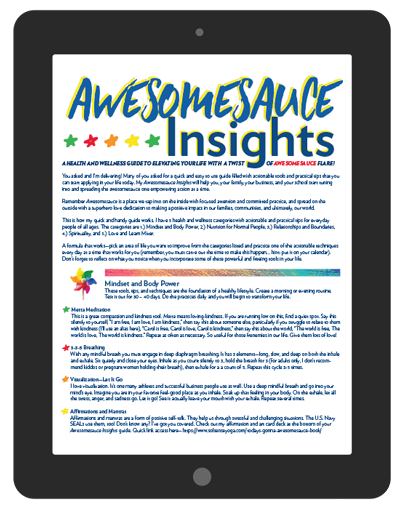
Many of us focus at this time of year on giving considerable thought and energy to our diets. We are modifying and changing our eating habits and instituting healthy alternatives for our minds and bodies. How many of us are giving considerable thought to our drinking habits and what role those habits play in our overall well-being? Don’t the liquids we consume deserve the same discriminatory attention?
We hear a lot about how much water we need per day, but if you are like me, I get bored with plain water pretty quickly when I have to drink so much of it per day. The path of tea is a lot like following the path of yoga – there are many paths that lead to peace, contentment, and joy. When we walk the path of tea not only will we be supplementing our yoga practice with a little extra peace, contentment, and joy, we will also nourish our minds and our bodies.
Before we get into the various kinds of tea and what tea may be best for you, I must give a little liquid love homage to the tea ritual.
The Ritual
It’s just piping hot water and tea leaves creating a nutritious synergy – what’s so ritual about that?
There’s a special mindset that goes into making a good cup or pot of tea. When you decide to make a cup of tea, over say a soda, coffee, beer, wine, etc., you’ve already voted and committed an act of self-love. Tea is filled with antioxidants and medicinal properties, so when we vote to drink tea, we vote for our health in a really big way. Tea is great for the body. The ritual that tea involves is great for the mind.
That mindset, that self-love, that commitment we have to feed ourselves sustainable naturally energizing liquids is a ritual presence that births the ultimate joy. As we choose our tea and warm our water to the final pouring of the water over the tea leaves and take note of the intense calming smell from the steam where the water and tea mix as one, we walk a step closer to embodying joy that much more. Joy in a cup of tea? You bet!
Each time we make a cup of tea, we vote to break old habits that don’t nourish our minds and our bodies. Here’s the ritual formula – mindfulness + liquid nourishment = peace, contentment, and joy. Let’s get this ritual into action with some practical information on what kind of tea is the best tea for you.
Loose Leaf or Tea Bags
Both loose leaf and tea bags are great to have around the house. Loose leaf is great if you know you have the time to drink a pot of tea. Tea bags are great for on the go. There’s plenty more to say about these options, but to get started, just know you have two basic options. You can also buy special tea bags for loose leaf or use a tea pot.
Kinds of Tea
All tea, minus the herbal blends and rooibos, come from the same plant – camellia sinensis. The best health benefits from tea will come from your own brew instead of the bottled variety due to high amounts of sugar and additives in the bottled kind. Studies of green and black tea varieties have found the antioxidants are great for the heart and may reduce cancer. Here’s the breakdown:
Black
Black tea leaves go through full oxidation and leaves are allowed to wither. Black tea has a more robust flavor and has the highest caffeine content.
Green
Green tea leaves are slightly oxidized and are allowed to either a bit after picking. The oxidation process is stopped by rapidly heating the tea leaves. The flavor is more subtle and green tea has less caffeine than black tea.
Oolong
Oolong tea undergoes partial oxidation. Oolong teas are sweeter and more fragrant. The caffeine content is between green and black.
White
White tea is processed from the most delicate part of the plant. The flavor is subtle and naturally sweet. The tea leaves are not oxidized. White teas also have lower amounts of caffeine if steeped for shorter periods of time.
Pu-erh
Pu-erh is an aged tea blacked tea from China with an earthy flavor. Puer is full of antioxidants. Its flavor is very strong and rich. Puer has high caffeine content.
Rooibos
Rooibos is a South African red tea leaf that has been fermented. This is a very fragrant, vibrant and caffeine free tea.
Herbal
Herbal tea leaves include a variety of teas from herbs, seeds, fruit and roots. Herbal teas are caffeine free so you can drink them all day long! Many herbal teas are full of medicinal properties. Common herbal teas for taste and calming effect are peppermint, lavender, and chamomile.
Green, black, and white teas also have theanine, which affects the brain and heightens mental alertness.
These are the basic categories of teas and within those categories you will find an array of blends that suit your taste buds from earthy, spicy, fruity, and everything in between.
Find a tea that works for you. There are so many varieties and blends to choose from. Experiment with loose leaf and tea bags. The kind of tea and method of tea making that is right for you is the kind that will get you coming back for more and more.
As you walk your yoga path, supplement your practice by walking the path of tea. Heat, steep, and drink up your joy.
Om Shanti Om ~ Athea

